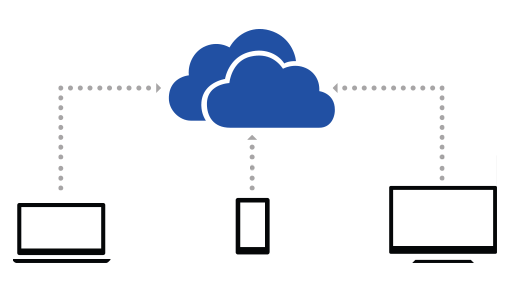More on Microsoft's SKU-morphic Windows vision

There's skeumorphism. And then there's SKU-morphism -- as in a few key next-generation Windows SKUs, which may morph before they debut.

As I've blogged previously, while Microsoft is moving toward a "One Windows" vision, that vision is more along the lines of one Windows core, but multiple SKUs, or versions, according to my contacts. (SKU actually stands for stock-keeping unit, for those wondering.)
This new strategy doesn't necessarily mean there will be a different SKU for every kind of Windows form factor out there. Instead, as Microsoft moves forward with its "Threshold" Windows wave, there might be just a few Windows SKUs built on top of a common Windows foundation, I'm hearing from my contacts.
It's definitely still early days for Threshold, which is supposedly slated to begin arriving around Spring 2015. Given all the management changes at Microsoft, things could change. But here's supposedly what the Softies are thinking at this point.
With Threshold, my sources say, there could be three primary SKUs: A "modern" consumer SKU; a traditional/PC SKU; and a traditional enterprise SKU.
The modern (i.e., Metro-Style/Windows Store) consumer SKU would be focused on WinRT apps. (WinRT, in this case, refers to the API set at the heart of Windows, not the current Windows RT operating system that runs on ARM.) It may end up targeting ARM- and Intel-based devices both. It would be updated frequently by Microsoft through the Windows Store.
This SKU supposedly wouldn't be optimized to run Win32 apps. However, my contact said there's the possibility that on some PC-like form factors, there may be a "desktop" that is more easily navigable for keyboard/mouse users.
This modern SKU would be the SKU for Windows Phones, ARM-based Windows tablets/PCs, phablets and other kinds of tablets. Some PCs also may run this SKU, providing Microsoft with a more head-to-head competitor to Chromebooks, as these machines would be more secure and locked down (thanks to the way Microsoft built the WinRT/Windows Store model).
The modern SKU is what has previously been rumored as a forthcoming Microsoft hybrid Windows Phone OS/Windows RT operating system.
A more traditional consumer SKU would be aimed at the current PC market. This SKU would include a desktop and be customized so that mouse/keyboard users will be able to continue to have some semblance of productivity and familiarity with Windows. This SKU also would be updated regularly and often through the Windows Store.
There also will likely be some kind of traditional Enterprise SKU, according to my contacts, that would include all the usual business bells and whistles, like support for Win32 apps via a Desktop environment, support for group policy, device management and more. This SKU would be aimed primarily at traditional PCs, tablets and other devices and also allow users to run "Modern"/Windows Store apps.
The Enterprise SKU might end up being for volume licensees only. This might be a SKU that doesn't update frequently/constantly through the Windows Store. Instead, it might be subject to IT policies/approvals, making enterprise users who don't want silent, automatic updates a lot happier. Microsoft Windows chief Terry Myerson hinted at something like this during his recent Credit Suisse tech conference appearance.
There will likely be some additional device-specific Windows "Threshold" SKUs for embedded devices and usages, such as point-of-sale terminals, kiosks, etc., given that the Embedded team is now part of Myerson's organization. But these SKUs won't be offered directly to consumers or business users directly.
Microsoft is attempting to straddle a fence here and continue to advance Windows as a "modern" mobile platform, while not disenfranchising their huge existing base. The big takeaway here is there may be more concessions coming to folks who felt like Windows 8 went too far in turning Windows into a touch-first, tablet-centric operating system. To me, this is a welcome furthering of the changes that began more conservatively last year with the re-emergence of the Start button and allowance of boot to desktop by default.
Update: Here are a couple of related tidbits, courtesy of sources of Windows SuperSite's Paul Thurrott. Thurrott said he's hearing the revised Desktop will allow users to run multiple Metro appson the Desktop. That'd mean windows comes back to Windows. Plus, he's hearing the Start Menu might return, too, supplementing the currently Start-Menuless Start Button -- another plus for those struggling with the current Windows 8.x navigation scheme.